If you’re a fan of Vikings, Norse mythology or just cool ancient stuff in general, then you’ll want to learn more about runes.
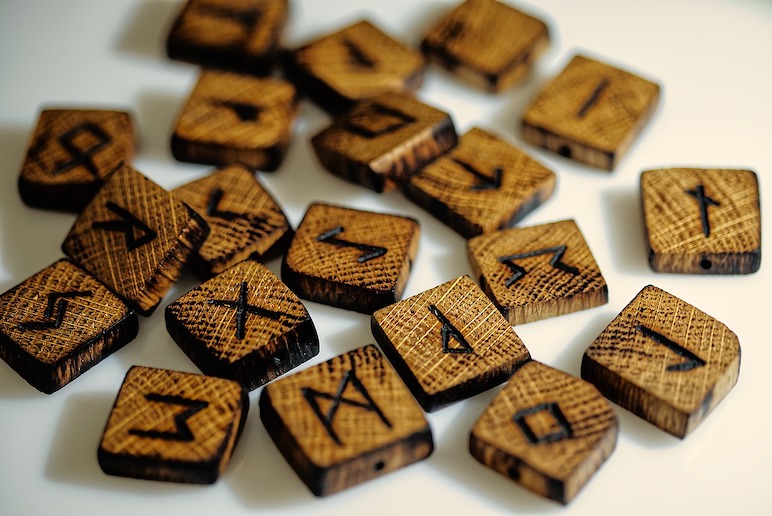
One of the most fascinating aspects of Viking culture is their use of runes. With runes, Vikings recorded their history, communicated with each other and even practised magic.
So put on your Viking helmets and let’s explore the history and cultural significance of Viking runes, as well as the different types of runes and the various ways in which they were used.
What are Viking runes?
Runes are essentially individual symbols or characters that represent specific sounds and meanings.
These symbols make up the writing system that was used by the Vikings and other Germanic peoples in the early Middle Ages.
If you’re still confused, think about it like this: the symbols in the Latin alphabet are called letters, but in the Germanic alphabet, they are called runes.
The Vikings used these runes to write down messages and sometimes even to cast magic spells. Cool, right?
For more on specific Viking symbols, read our guides to the Vegvisir symbol and the Valkyrie symbol – two of the best-known symbols from Viking culture.
You can also turn English words or names into Viking runes with this tool.
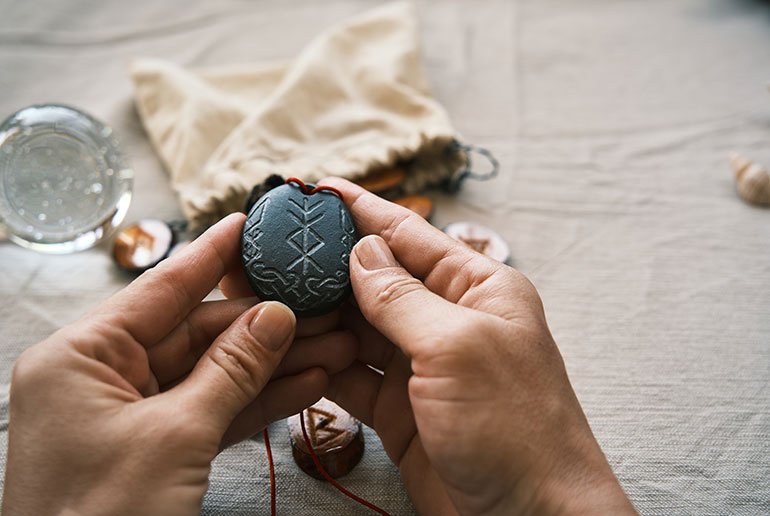
How many confirmed examples of Viking runes have been found?
Around 6,000 confirmed examples of Viking runes have been found across Scandinavia and other areas where the Vikings settled or traded.
The vast majority of these runes are inscriptions on stones, pieces of wood or bones.
But runes have also been found on metal objects, such as weapons and jewellery, showing that they were widely understood and permeated many aspects of Viking life.
The main types of Viking runes
There are two main groups or types of Viking runes: the Elder Futhark and the Younger Futhark.
Let’s go over each group and explore the differences between them, as well as their individual alphabets.
The Elder Futhark runes
The Elder Futhark, also referred to as the Old Futhark, or Germanic Futhark, is the earliest version of the runic alphabets.
It’s believed that the Germanic tribes used the Elder Futhark runes during the Migration Period to record Northwest Germanic dialects.
| ᚠ | Fehu | “cattle” |
|---|---|---|
| ᚢ | Uruz | “wild ox” or “strength” |
| ᚦ | Thurisaz | “giant” |
| ᚬ | Ansuz | “divine inspiration” or “god” |
| ᚱ | Raido | “journey” |
| ᚲ | Kaunan | “torch” |
| ᚷ | Gebo | “gift” |
| ᚹ | Wunjo | “joy” |
| ᚺ | Hagalaz | “hail” |
| ᚾ | Naudiz | “need” |
| ᛁ | Isaz | “ice” |
| ᛃ | Jera | “harvest” |
| ᛇ | Eihwaz | “yew” |
| ᛈ | Perthro | “fortune” |
| ᛉ | Algiz | “protection” or “elk” |
| ᛊ | Sowilo | “sun” |
| ᛏ | Tiwaz | “Tyr” (the Norse god of war and justice) |
| ᛒ | Berkano | “birch” or “birth” |
| ᛖ | Ehwaz | “horse” |
| ᛗ | Mannaz | “human” |
| ᛚ | Laguz | “water” |
| ᛝ | Ingwaz | “Ing” (a god associated with fertility) |
| ᛞ | Dagaz | “day” or “dawn” |
| ᛟ | Othala | “home” or “wealth” |
We know the Elder Futhark was used because we have found inscriptions on various objects such as jewellery, amulets, plate ware, tools, weapons and runestones in Scandinavia.
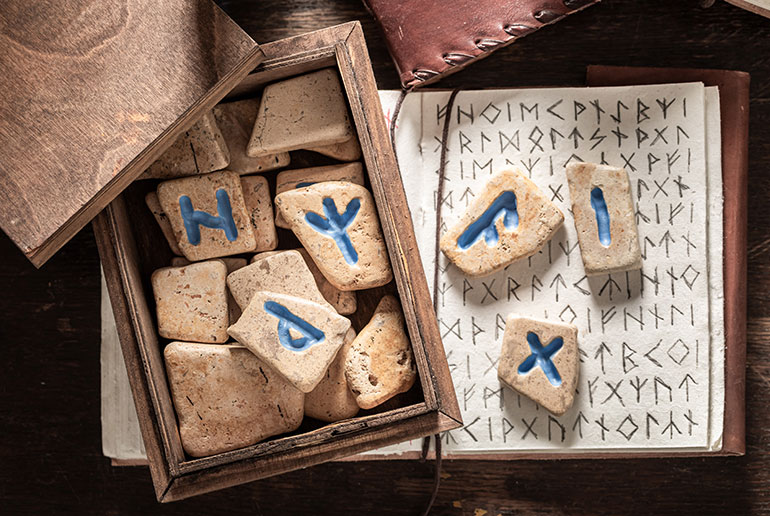
These inscriptions date back to the 2nd to the 10th centuries, making the Elder Futhark a remarkable and significant archeological discovery.
The Younger Futhark runes
Younger Futhark is a runic script that originated from the Elder Futhark but is a more simplified version.
This alphabet contains only 16 characters and emerged during the 9th century, following a transitional period spanning the 7th and 8th centuries.
| ᚠ | Fé | “wealth” |
|---|---|---|
| ᚢ | Úr | “iron”/”rain” |
| ᚦ | Thurs | “thurs”, a type of entity |
| ᚬ | As/Oss | “(a) god” |
| ᚱ | Reið | “ride” |
| ᚴ | Kaun | “ulcer” |
| ᚼ | Hagall | “hail” |
| ᚾ/ᚿ | Nauðr | “need” |
| ᛁ | Ísa/íss | “ice” |
| ᛅ/ᛆ | Ár | “plenty” |
| ᛋ/ᛌ | Sól | “Sun” |
| ᛏ/ᛐ | Týr | “Týr, a deity” |
| ᛒ | Björk/bjarkan/bjarken | “birch” |
| ᛘ | Maðr | “human” |
| ᛚ | Lögr | “sea” |
| ᛦ | Yr | “yew” |
What are runestones, then?
As we mentioned before, runes were used for inscriptions on a wide range of objects, including weapons, tools and jewellery.
But perhaps the most well-known examples are the runestones.
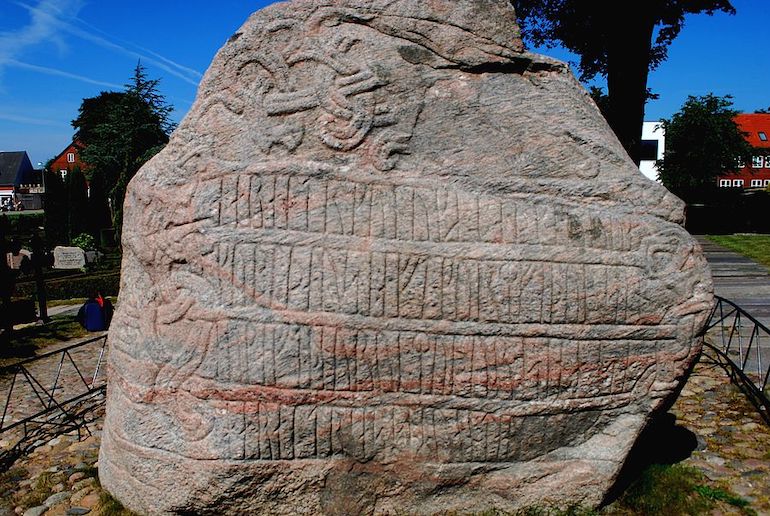
These are found in many places in Scandinavia, but some of the most famous runic inscriptions lie in Denmark and Sweden.
The Jelling Stones, in Jelling, Denmark, are a pair of large runestones erected in the 10th century by the Viking king Harald Bluetooth.
For more on visiting Denmark’s Viking remains, see Viking attractions around Copenhagen.
In Sweden, the Rök Runestone is one of the most famous examples of runic inscriptions. It was discovered in the 19th century and is said to contain stories that relate to Norse mythology.
The Kylver stone, also located in Sweden, is a smaller runestone that dates back to about 400 AD. It was discovered in Gotland in 1903 and is now in the Swedish Museum of National Antiquities in Stockholm.
For more on Viking remains in Sweden, read our post on Where to find Vikings in Sweden.
There are many more runestones out there, with most of them concentrated within Scandinavia, but some have also been founded in other parts of Europe as well.
Runes in magic and divination
Runes are believed to have magical powers and were often used in mystical and religious practices by the Vikings.
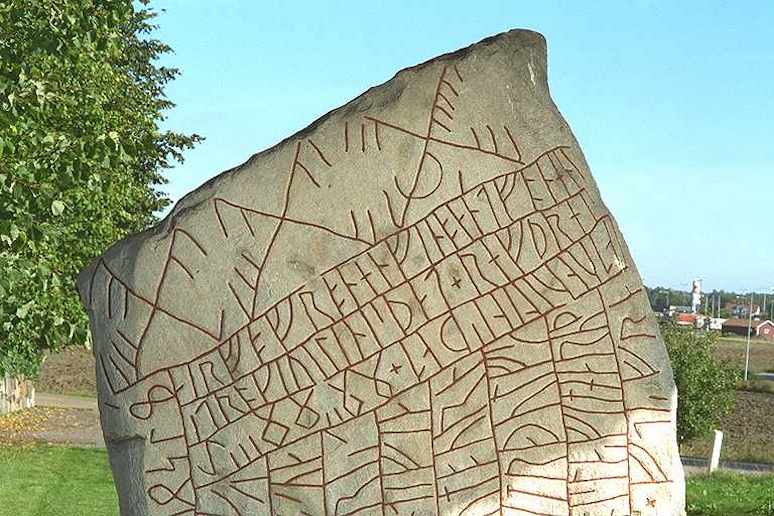
These are sometimes referred to as “charms”. These charms would provide protection, attract luck or fortune, or even ward off evil energy or spirits.
In addition, runes were also used in divination or the practice of seeking knowledge of the future or unknown by supernatural means.
This would involve casting or throwing rune stones and interpreting the patterns and symbols that appeared, much like the practice of reading tarot cards or other forms of fortune-telling.
Preserving and studying Viking runes
The work of archeologists and linguists is vital in deciphering the inscriptions and preserving them for future generations.
Archaeologists use various methods to document and preserve inscriptions. Linguists analyse the inscriptions to decipher the meaning of the runes and better understand the Norse language.
Those who study runology are called runologists.
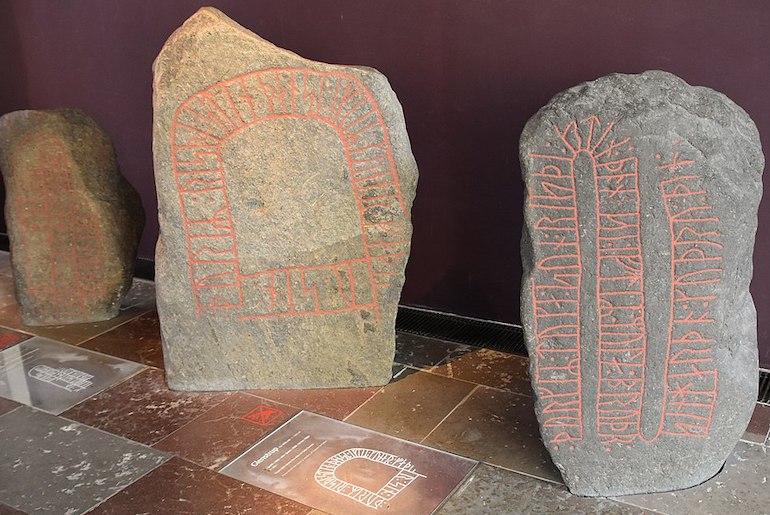
Several notable museums and collections feature Viking runes, including the British Museum in London, the National Museum of Denmark in Copenhagen (free entrance with the Copenhagen Card), and the Swedish History Museum in Stockholm.
These institutions house collections of Viking artefacts, including runestones, amulets and weapons, providing a glimpse into the everyday lives of the Norse people.
Runes in pop culture
The use of Viking runes in modern popular culture is quite prevalent, with their influence visible in movies, TV shows and more.
Viking runes feature in “The Hobbit” films and Dreamworks’ “How to Train Your Dragon”. You can even see them in video games such as “Destiny” and “God of War”.
And did you know that the Bluetooth logo is actually a Viking rune? Yep, it’s named after Harald Bluetooth, the Viking king who united Denmark and Norway in the 10th century.
Runes are also appearing in the realm of fashion and body art. Runic-inspired tattoos are increasingly popular for those wanting to embrace the Viking aesthetic.
Viking runes have also been incorporated into fashion trends, with clothing and jewellery featuring runic inscriptions. You can even get runic-inspired Viking wedding rings and Viking hairstyles are a popular trend too.
Can you learn to read and write Viking runes?
Yes, it is possible to learn how to read and write runes.
Nowadays, only experts and a few enthusiasts can understand them, but that doesn’t mean you can’t try!
Just keep in mind that it requires dedication and practice to master. If you have the patience to learn, there are books, online courses and instructional videos to help you along your journey.
FAQs
Are Norse runes associated with witchcraft?
Although runes are associated with magic and divination, they are not necessarily associated with witchcraft.
While some modern practitioners of witchcraft may use runes, the historical use of runes was not exclusively tied to witchcraft or paganism.
How do we know what Viking runes mean?
That medal would have to go to Sophus Bugge, a Norwegian philologist and linguist who is said to have deciphered the runes in 1865.
See also:
Famous Vikings you should know about
Cool male Viking names and their meanings
Try our rune translator
Viking name generator

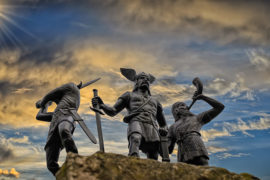

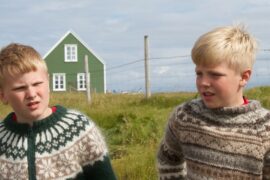
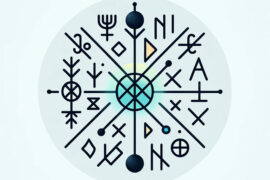

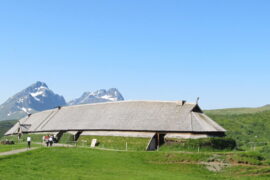



Hidden in the depths of Scandinavian texts and carved on cold stones, runes are more than just symbols. They are imprints of primordial forces of nature, whispering messages of winds and rivers.